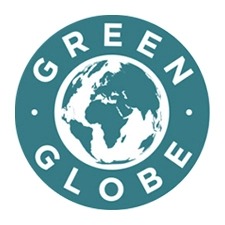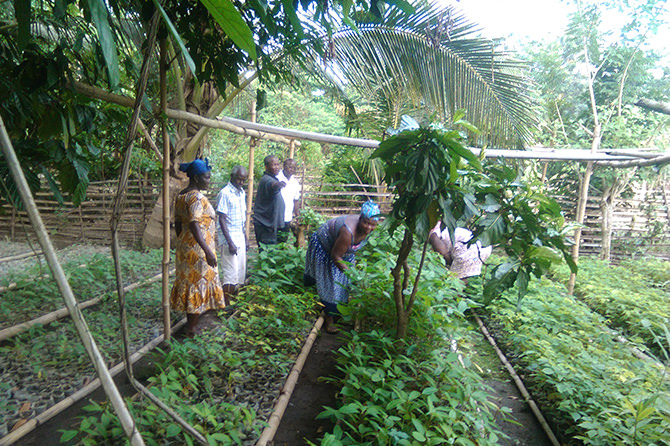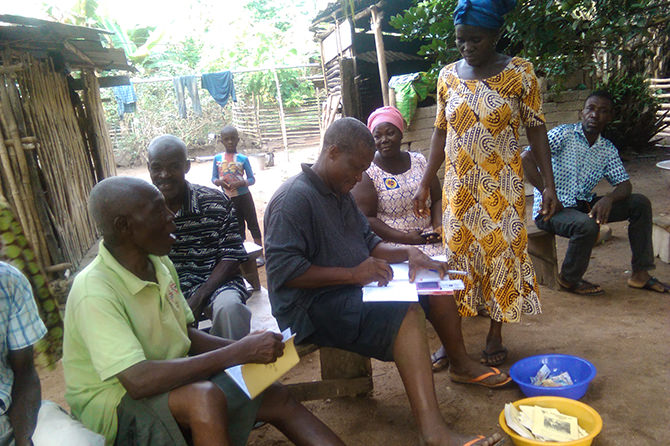2019 GHANA
Biodiversity Conservation, Sustainable management of Resources and Traditional Knowledge of Sacred Forest
Green Globe Ghana (GGG)
Community / field-based implementation
Landscape
Overview
The project site, Anfoeta Sacred grove, which forms part of the Weto Landscape, is one of the world’s most outstanding biodiversity hotspots. This sacred grove, through its ecological functions, provides various ecosystem services such as water sources for five local communities, soil to protect erosion, medicinal plants, habitat for sacred animals, shelter for community deities, and a place for rituals and other ceremonies. However, these outstanding biodiversity features and the cultural diversity of the sacred grove are being threatened by fragmentation and encroachment of agriculture, as well as illegal harvesting of trees and expanding settlements around the grove.
To cope with these issues, this project aimed to promote the sustainable management of sacred forest resources with native biodiversity in the project communities with following objectives:
1. Promote sustainable use of natural resources of non-timber forest products (NTFPs) to reduce pressure on the sacred forest.
2. Develop and sustain livelihood support for the wellbeing of the sacred forest resource dependents.
3. Empower the necessary institutional capacity for the integration of conservation and production.
To achieve these objectives, we conducted the following activities:
- Training and empowering communities to carry out various activities that would help conserve the landscape for resilience within carrying capacity
- Capacity building of resource management groups
- Developing systems and best practices in resource use
Key achievements
- A nursery group of 30 people was formed, and a tree nursery was established to produce about 150,000 species of tree seedlings.
- 5,000 tree seedlings were planted in degraded areas and individual farms.
- A community resource management group, CREMA, was formed
- The farmers participating in CREMA were trained in SMART agriculture including organic fertilizer, which made use of their own urine to fertilize their farms.
- Livestock rearing as livelihood support was established.
- A village saving and loan scheme was introduced.
- Communities increased their awareness about the importance and benefits of conserving the forest.
Lessons
- The development of indigenous knowledge about resource protection has changed the communities’ attitude and increased the value of their resources towards better management.
- Attitudinal issues were at the heart of resource degradation. For example, one of the communities does not go to the farm on Fridays and does no other work on Fridays either. This custom had to be changed for the success of the project. There were various other challenges. For example, some of the youth were more interested in their daily activities that generated immediate income, and were not motivated to participate in project activities. Thus, it was important to make them more aware of the importance of conservation, and introduce them to new techniques, as well as carry out knowledge development of social groups and stakeholders.
Project location
Organisation

Green Globe Ghana (GGG)
- Sector
- Non-governmental organisation
- Country
- Ghana
- Website/SNS
- https://www.info@greenglobegh.org/
Relevant projects
Projects of the same year
Aichi Biodiversity Targets
Aichi Biodiversity Targets
-
Awareness increased
-
Biodiversity values integrated
-
Incentives reformed
-
Sustainable production and consumption
-
Sustainable agriculture, aquaculture and forestry
-
Protected areas increased and improved
-
Ecosystems and essential services safeguarded
-
Ecosystems restored and resilience enhanced
-
Traditional knowledge respected and integrated
-
Knowledge improved, shared and applied
Sustainable Development Goals
Sustainable Development Goals
-
No poverty
-
Zero hunger
-
Good health and well-being
-
Gender equality
-
Clean water and sanitation
-
Climate action
-
Life on land

